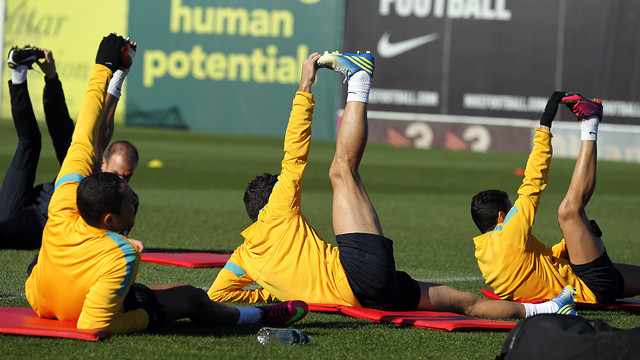When faced with a potential clinical emergency situation, physicians are
often expected to make diagnostic decisions within a limited time
frame. A delayed decision, albeit an accurate one, is a futile decision
if the patient deteriorates. Therefore, as almost always, such urgent
decisions have to be made with some degree of uncertainty. This is
especially so in an environment like the emergency department.
Physicians in emergency department make many decisions in the course of a
working shift, some of which can have high consequences. Furthermore,
emergency departments often have unpredictable and variable patient
volume load as well as clinical acuity. Given the unfavorable nature of
such environment, emergency department is often a place that is
vulnerable to error. Under such circumstances, a physician in emergency
situation often employs a compendium of heuristics (Croskerry et al,
2009).
Heuristics are mental shortcuts or “rules of thumb” or “gut-feeling”
(Croskerry et al, 2009) used to assist a physician to rapidly make
decisions without formal analysis. It is largely a form of gestalt
pattern recognition that is intuitive and its accuracy is dependent on
the experience of the physician. Two heuristics that are considered
essential when faced with an emergency situation are the
“rule-out-worst-case-scenario” and the sick/not sick dichotomy
(Croskerry et al, 2009).
When properly applied, these heuristics can be beneficial, but they will
occasionally spell disaster when a number of cognitive biases are
overlooked. Among the important cognitive biases in clinical medicine
are:
- availability bias – it refers to our tendency to judge things
as being more likely, or frequently occurring, if they readily come to
mind. Therefore, a recent experience with a disease might inflate our
likelihood to diagnose the patient with this disease
- anchoring – it refers to out tendency to perceptually fixate
on to the salient features in the patient’s initial presentation at an
early point of the diagnostic process and failing to adjust our initial
impression even in the light of later information.
- confirmation bias - it refers to our tendency to look for
confirming evidence to support the diagnosis we are “anchoring” to,
while downplaying, or ignoring or not actively seeking evidences that
point to the contrary.
- search satisficing – it refers to our tendency to stop
looking for alternate or even coexisting diagnoses when we have found
one. A classic example of this is the tendency of the physician to call
off the search for a second fracture once he thinks he is “sufficiently
satisfied” with finding the first fracture (Croskerry et al, 2009).
Actually there is a long list of cognitive biases (but the four listed
are the common ones in emergency medicine) taken from a book written by
Baron, J. Professor Baron has done significant works in this area of
judgment, decision making and cognitive biases (not specifically
pertaining to emergency medicine, but in general). Check out his
website for more resources. Also see the list of
cognitive biases in wikipedia.
Ultimately however, the application of heuristics in clinical medicine
is inevitable, particularly in emergency situations where every minute
counts. For example, in a case of witnessed ventricular fibrillation
(VF), immediate step of resuscitation and defibrillation is called for.
In such cases, the physician must be trained with the ability for
gestalt pattern recognition of VF even within the ‘blink’ of an eye. No
time should be lost in searching for the underlying causes of the
ventricular fibrillation.
The question, therefore, is not whether the use of heuristics can be
minimized or not. The question is how we can temper heuristics with
de-biasing strategies so that a more calibrated and balanced diagnostic
decision could be made. Such de-biasing strategies are often called
cognitive forcing strategies. These are deliberate, systematic
self-regulatory cognitive mechanisms to provide a check and balance to
minimize biases.

One
form of cognitive forcing strategy often used is known as the
metacognition. It describes an individual’s ability to stand apart from
his own thinking in order to be aware of his own preferred learning
approaches and ultimately to manipulate his own cognitive processes to
his own advantages. In short, metacognition is “thinking about
thinking.” It allows one to ask questions like: “How well did I do?”
“What could I have done it differently if I am given a chance again?”,
etc.
Therefore, making a timely, well-calibrated decision in an emergency
situation is a critical thinking skill that should be inculcated in
every physician. In fact, critical thinking in emergency medicine is
defined as “the intellectually disciplined process of actively and
skillfully conceptualizing, applying, analyzing, synthesizing, and/or
evaluating information gathered from, or generated by, observation,
experience, reflection, reasoning or communication, as a guide to belief
or action” (Croskerry et al, 2009).
It is often assumed that every medical student would have developed this
critical thinking skill by the time they have graduated from medical
schools and would continue to further mature their cognitive process
when they start working. After all, university graduates are expected to
have a scholarly attitude towards knowledge and university is expected
to be more than just a center for knowledge transmission (Biggs &
Tang, 2007).
Unfortunately, within the specific context of undergraduate medical
curriculum, the expectation that medical students will eventually
develop matured critical thinking skill is largely empirical and yet to
be explored or formally studied.
Furthermore, studies done in other field of tertiary education show
potential cultural influence on critical thinking skill acquisition
among undergraduate students. In fact, these differences have led to
discussions and debates about the appropriateness of applying Western
pedagogy for Asian students.
From some of these studies, it was shown that Asian university students
are less likely to engage in critical thinking compared to their Western
counterparts. In many Asian countries, the teaching and learning
activities are often exam-driven in large-sized classrooms and
structured around the goal of succeeding in examinations (Biggs &
Watkins, 2001). Furthermore, Asian learners are usually perceived as
silent, passive, uncritical and compliant rote-learners who rely on
memorization (Biggs and Watkins, 1996); although paradoxically, despite
of this rote-based learning strategy, Asian learners have often been
found to outperform their Western counterparts (Biggs and Watkins,
2001).
Even within Malaysia, our tertiary students are found to be rather
reserved about voicing their own opinions. One of these culturally
influenced perceptual learning styles is their preference to be neutral,
to “save face” as well as to adopt a conservative rather than
confrontational approach (Yong, 2010).
The questions therefore are:
What is the preferred learning style of our medical students – passive
rote learning or active engagement in discussion and challenges? And is
this preference culturally influenced?
Does this pedagogy preference translate into the way our house officers
deal with their seniors with they have a different opinion compared to
their seniors? Do they passively comply with following orders or do they
actively engage in discussion with them?
How does that affect our house officers when they face with a
decision-making situation in clinical emergencies? Do they passively
leave the decision to their seniors? What is their risk preference –
they do prefer to choose a riskier alternative to “do something for the
patient” (much like a gambling paradigm) or do they rather choose a more
conservative approach of “wait and see”?
Do our house officers, therefore, perceive a chasm in the acquisition of
the decision-making skill in clinical emergencies during their
transition from being a student in medical school to being a newly
qualified doctor? In other words, do they perceive that their medical
schools do not prepare them enough for critical thinking and
decision-making skills?
Professor Croskerry has written a substantial number of articles and books on these topics. Click
here to download an article by Prof Croskerry.
References:
Biggs, J. B. & Watkins, D. A. (1996) In Asian Contributions to
Cross-Cultural Psychology (Eds, Paudey, J., Sinha, D. and Bhawuk, D. P.)
Sage Publication, New Delhi.
Biggs, J. B. & Watkins, D. A. (2001) In Teaching the Chinese
Learner: Psychological and Pedagogical Perspectives(Eds, Watkins, D. A.
and Biggs, J. B.) Comparative Education Research Centre, the University
of Hong Kong, Hong Kong, China, pp. 277-300.
Biggs, J. B., & Tang, C. (2007). Teaching for Quality Learning at
University: What the Students Does (3rd ed.). New York, NY: Open
University Press.
Croskerry, P. (2009). A universal model of diagnostic reasoning. Acad Med, 84(8), 1022-8.
Croskerry, P., Cosby, K., Schenkel, S. M. & Wears, R. L. (2009)
Patient Safety in Emergency Medicine, Wolters Kluwer Health/Lippincott
Williams & Wilkins, Philadelphia.
Yong, F. L. (2010). A Study on the Cultural Values, Perceptual Learning
Styles, and Attitudes Toward Oracy Skills of Malaysian Tertiary
Students. Europ. J. Soc. Sci., 13, 478-92.



















